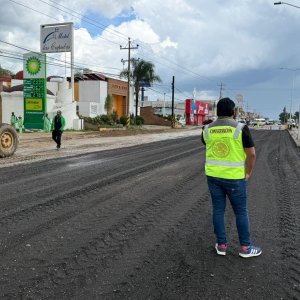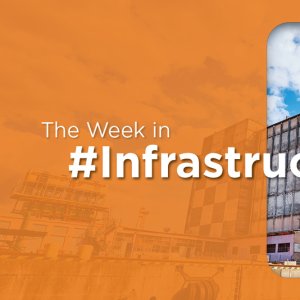BIM to Increase Accuracy in New Airport

STORY INLINE POST
Q: What role did Consorcio IUYET play in the development of NAICM?
A: Before participating in NAICM, Consorcio IUYET had been involved with CONAGUA in various projects, one of which was the hydraulic project for Lake Texcoco, where NAICM is being constructed. We carried out various studies and were responsible for monitoring its subsidence. We participated in NAICM through the geomatics studies tender, which included the entire land for the construction of platforms, runways, roads and terminal buildings. The terrain on which the airport is located is incredibly unstable. We had to find a solution to ensure that the control points were reliable enough to provide a stable reference network for the project. Because of NAICM’s unique terrain and its size of 5,000ha, the use of traditional methods to collect data would have taken us a year to finish. Our technology allowed us to do it in just four months. Apart from our technologies, our years of experience of working on Lake Texcoco made the task easier.
We are automating processes. With normal data gathering, a company could retrieve 400 points per day. Our technology captures more than 1 million points per second. We can collect more data at a better price, making our technology far more competitive than any other in the market. Because we are automating these studies, we also require fewer personnel. Instead of having to use many trucks filled with equipment and twice as many employees, we can do it with one truck and fewer people, which also favors the environment, a great variable in sustainable developments. We can use our technology in any phase of a project and have a great impact on the overall results.
Q: What technologies is Consorcio IUYET using to increase the accuracy of the project?
A: Consorcio IUYET integrates High Definition Surveying (HDS™), Building Information Modeling (BIM) and drones into its projects. These technologies allow us to obtain detailed and accurate data in a fraction of the time compared to traditional methods. HDS™ is performed with a 3D scanner that collects topographical data in high definition that can be used for large infrastructure projects like bridges or buildings. BIM is the construction of a project in a virtual environment with real information. This methodology makes it possible to analyze the building or infrastructure to find impediments and to solve problems before its physical construction. BIM allows companies to save money by modeling the design, the construction and even the maintenance stages of a project.
There is still a low acceptance of new technology because in many cases companies do not know it exists, what it does or how it is used and so they are skeptical of the outcome. We believe it is vital to comply with the standards and specifications of the industry when using these technologies, especially because its uncommon in Mexico. We are the first company in the world to obtain an ISO 9001:2015 certification in High Definition Surveying (HDS™). All our drones and pilots are authorized and possess a license from the General Direction of Civil Aeronautics (DGAC). The Public Works Law will be reformed to integrate BIM into its requirements. All large projects will be modeled in BIM. The private sector agrees with this change as long as it is adapted to the Mexican market. While building in Mexico, international companies tend to stick to their home country’s norms and ignore Mexican normative and construction methodologies.
Q: What other tenders does IUYET want to be involved in within NAICM?
A: Consorcio IUYET would also like to participate in the maintenance and monitoring of NAICM. We are constantly researching technological innovations from around the world to apply them in Mexican projects. An airport can never suspend operations completely, not even to provide maintenance. We must look for nondisruptive technological alternatives to ensure the continuous and optimal operation of the airport. Our task is to contribute to finding these alternatives and to put them into practice.























